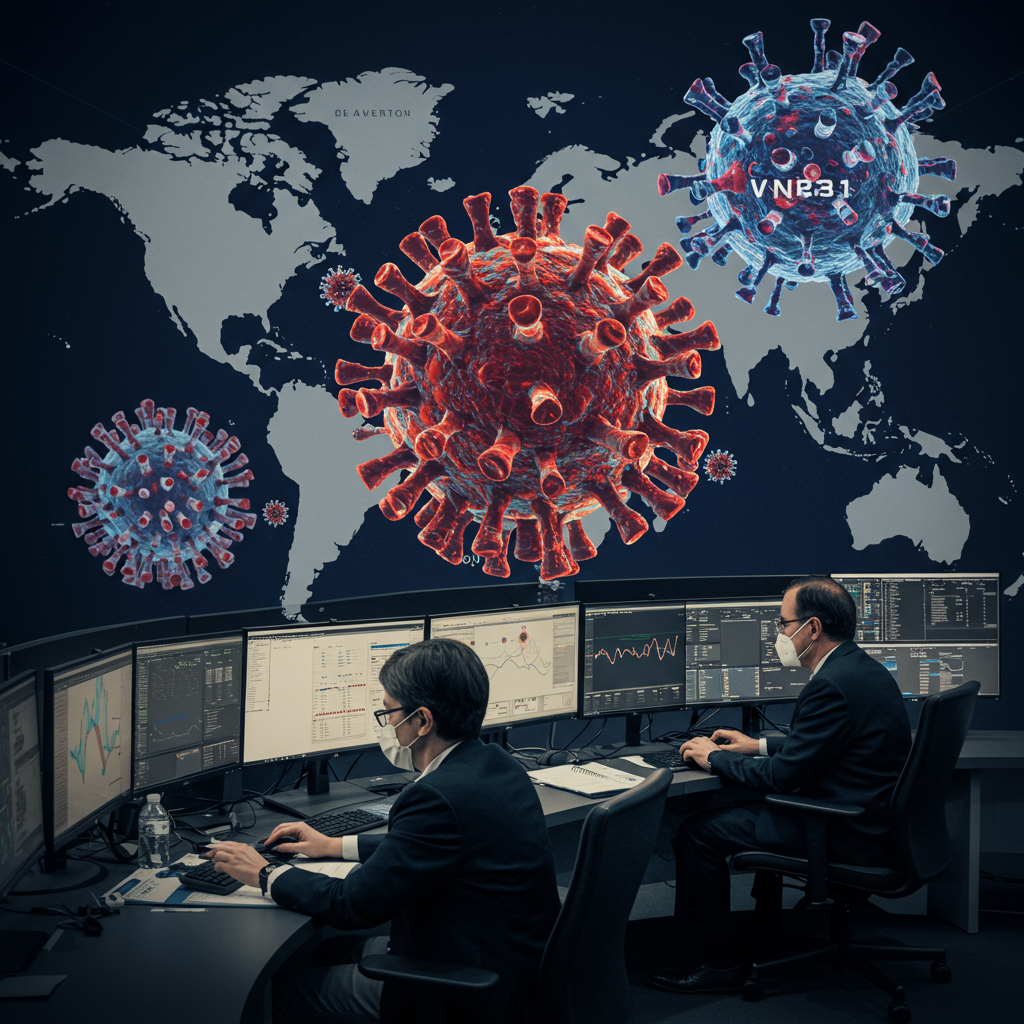Health officials are closely watching the emergence of a new COVID-19 variant, identified as NB.1.8.1, which is showing increased circulation globally. However, the World Health Organization (WHO) currently assesses the overall risk to the public from this variant as low.
According to the WHO, while NB.1.8.1 is increasing in proportion compared to other circulating variants, surveillance data so far indicate no signs of it causing more severe illness than previous strains. A growth advantage over co-circulating variants has been noted in models, suggesting it may spread more easily. Despite this, there’s currently no evidence linking NB.1.8.1 to an increase in COVID-19 hospitalizations, deaths among hospitalized patients, or overall mortality.
Monitoring emerging variants is a crucial part of tracking the pandemic. Research into how variants evolve and spread, including studies examining populations in different areas like rural versus urban communities, helps scientists understand transmission patterns and anticipate future trends.
What to Know About NB.1.8.1 Symptoms
Based on clinical observations, the symptoms associated with the NB.1.8.1 variant appear consistent with those seen in prior COVID-19 strains. Common symptoms include:
Fever
Headache
Cough
Runny nose
Fatigue
Body aches
Nausea, vomiting, or diarrhea
A sore throat remains a very common symptom of COVID-19, affecting a large percentage of patients. While some anecdotal reports have described a particularly severe “razor blade” sore throat in connection with NB.1.8.1, it remains unconfirmed whether this symptom is uniquely or consistently linked to this specific variant or if it occurs at a higher rate than with other strains. In contrast, some past variants, like Arcturus (XBB.1.18), were associated with more distinct symptoms such as pink eye and high fever, particularly in children, highlighting that variant-specific symptom profiles can sometimes emerge.
Severity and Vulnerable Populations
Echoing the WHO’s assessment, experts currently do not believe NB.1.8.1 causes more severe disease overall. While most people recover from a COVID-19 infection regardless of the variant, some individuals remain at higher risk for severe outcomes, hospitalization, or developing long COVID. Risk factors for severe illness generally include age, underlying health conditions (like cardiovascular disease), immunosuppression, and acute respiratory distress. Hospitalizations related to COVID-19 in the U.S. have remained relatively stable despite the emergence of new variants.
Vaccination and Treatment
Health authorities, including the WHO’s advisory group on vaccine composition, continuously evaluate how well current vaccines perform against circulating variants. Recent vaccine recommendations have centered on antigens like monovalent JN.1 or KP.2, reflecting the prevalence of strains within the Omicron lineage. NB.1.8.1 is also descended from Omicron.
The specific effectiveness of the current* COVID-19 vaccine against the NB.1.8.1 variant is still being assessed. There are some preliminary reports suggesting potential immune escape properties in NB.1.8.1, which could potentially lessen the protection offered by existing vaccines or prior infection. However, the hope is that because it stems from the Omicron family, the current updated vaccines targeting that lineage will retain some level of protective activity against NB.1.8.1, particularly in preventing severe disease.
Fortunately, antiviral treatments like nirmatrelvir (Paxlovid) are expected to remain effective against NB.1.8.1. These treatments have generally maintained efficacy against Omicron subvariants, including the related FLiRT variants (like KP.2 and JN.1) that are also currently circulating and being monitored by health officials.
The emergence of NB.1.8.1 underscores the ongoing need for vigilance and monitoring. While this specific variant does not appear to pose a greater risk of severe disease based on current data, staying informed about circulating strains, considering recommended vaccinations, and testing when symptomatic remain important tools in managing the spread of COVID-19.




